After a family trip to Italy, I was totally inspired by the fresh, simple flavours—especially their pesto di basilico. There’s just something magical about fresh basil leaves, extra virgin olive oil, and parmesan cheese that elevates any dish. I knew I had to recreate that vibrant basil pesto at home, and this quick, 10-minute recipe is perfect for bringing those Italian vibes to your kitchen!
Table of contents
What is Pesto di Basilico?
Let’s talk Pesto di Basilico—aka the OG basil pesto. We’re talking fresh basil leaves, heaps of garlic, extra virgin olive oil, and parmesan cheese coming together in one dreamy, uncooked sauce. This beauty hails from Genoa, Italy, which is why you’ll hear it called pesto alla Genovese too.
Fun fact: "Pesto" actually comes from the word "pestare," which means "to pound" or "crush." Back in the day, they used a mortar and pestle for this, but lucky for us, the food processor makes it a breeze while keeping those amazing flavours intact.
Ingredients for Basil Pesto
This version of pesto alla Genovese sticks to its roots with basil, garlic, and parmesan, plus a touch of toasted pine nuts for earthiness and lemon for brightness. It’s a full-flavour dressing that’s perfect on pasta, chicken, or veggies. Make a bigger batch, and you’ll have a couple of quick, flavourful meals ready to go!

- Fresh basil leaves
- Pine nuts
- Parmesan cheese
- Garlic
- Extra virgin olive oil - I used Birdy organic olive oil, which is from Spain (not Italy, I know!), but I love it—it’s only available directly from the farm - Finca Heredad La Boquilla! Looks like I'll have to head back to Spain soon.
- Salt and pepper
- Lemon
How to make this Basil pesto
Okay, get ready to make the best basil pesto ever! Here's how it goes:
First up—basil prep! Give those leaves a quick rinse, then make sure they're totally dry. Wet basil? Not what we're going for here.
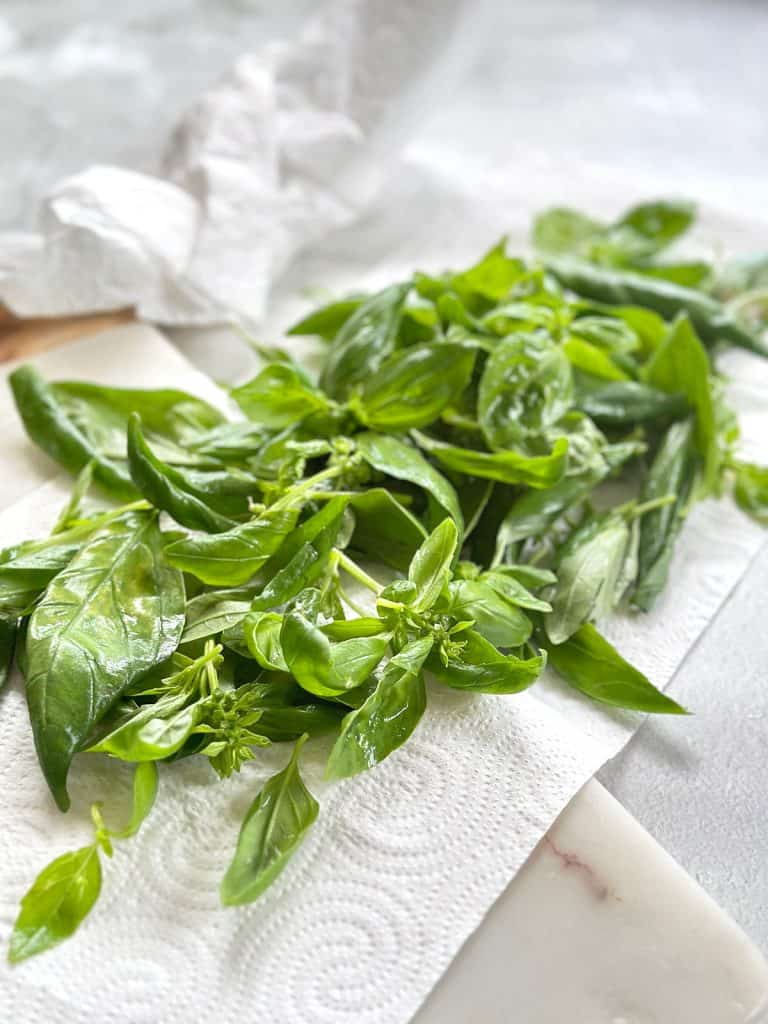
Next, it’s nut time! Toast those pine nuts (or walnuts) for just a few minutes in a dry skillet. Trust me, it really brings out the flavour. Once toasted, let them cool off before you toss them in.
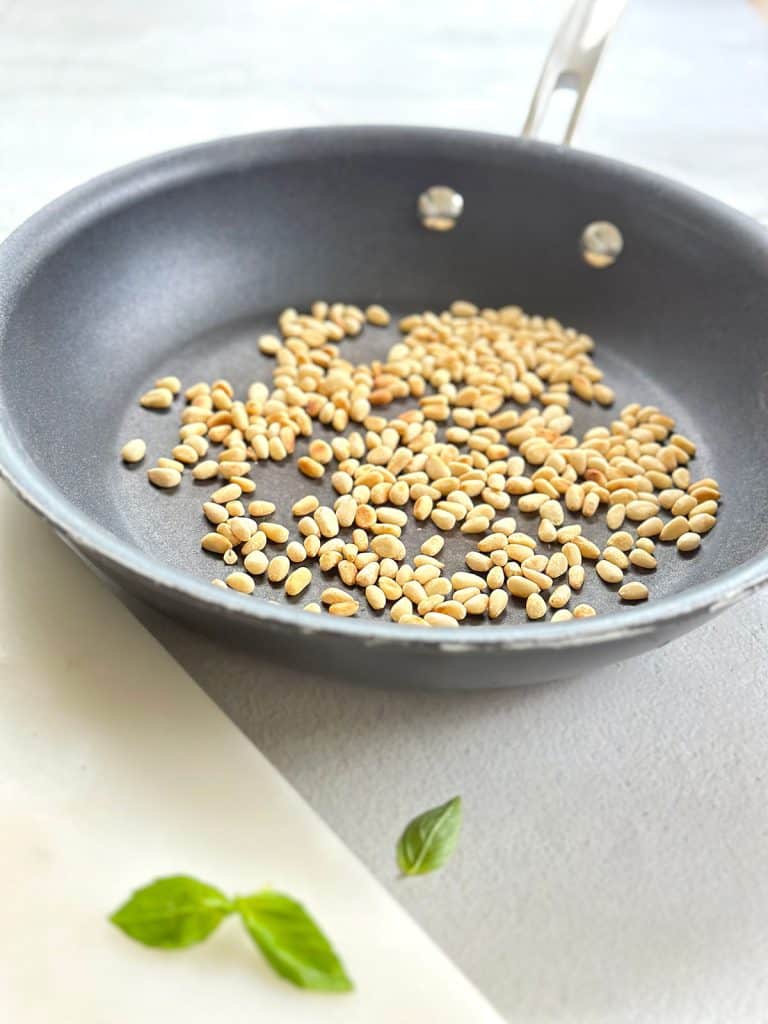
Now comes the fun part—blending time. Grab your food processor and throw in the basil, nuts, garlic, and Parmesan.
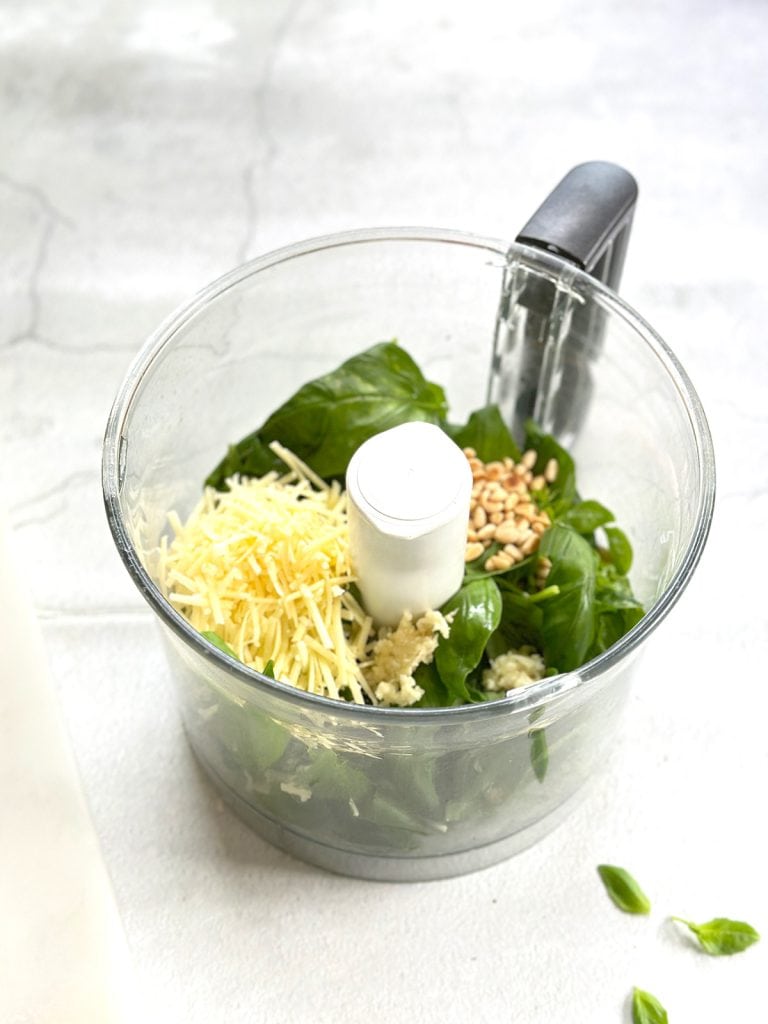
Give it a couple of pulses so it’s all chopped up but still has some texture.
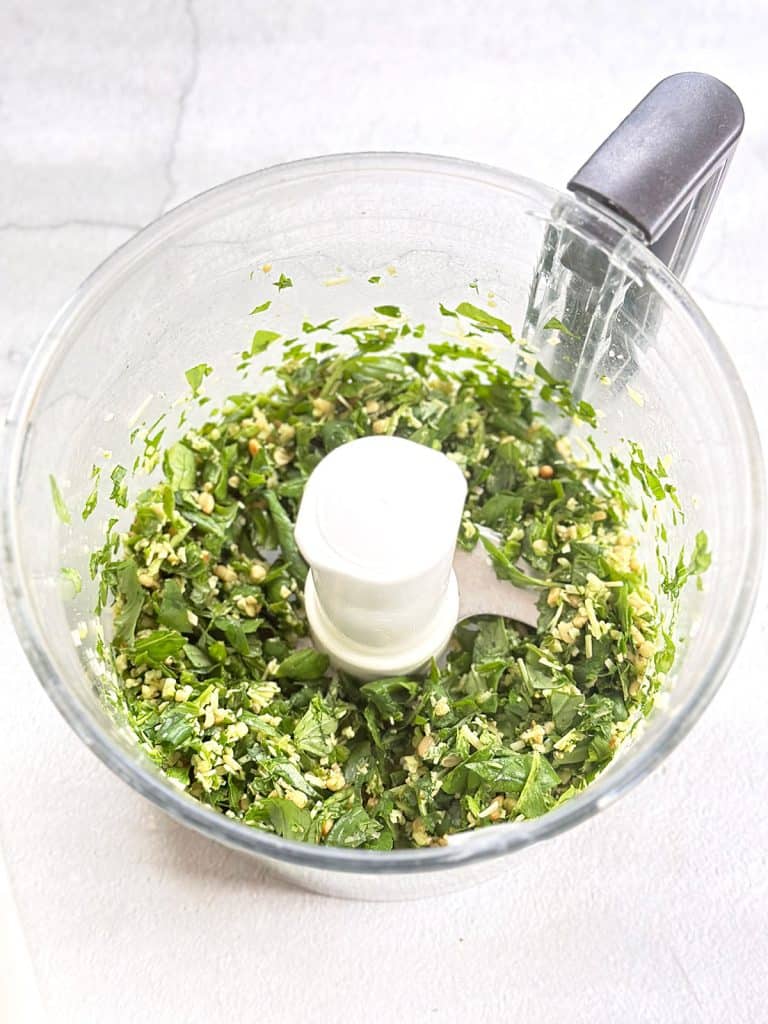
Olive oil is where the magic happens. Slowly drizzle it in while your processor does the hard work.

Keep going until you get that perfect smooth-yet-chunky pesto vibe.
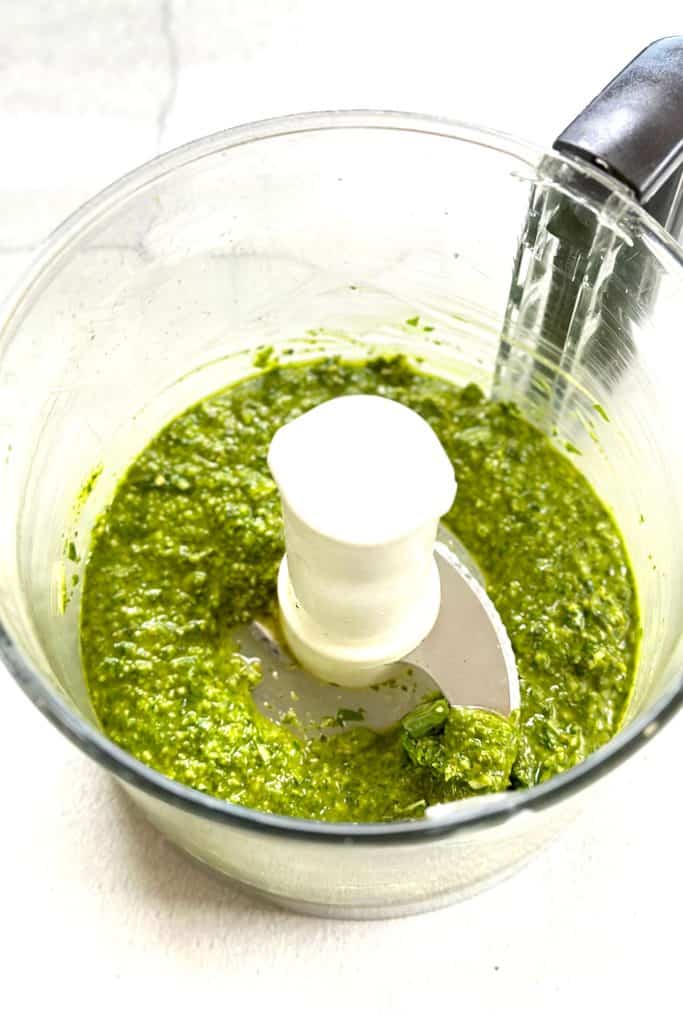
Finally, give it some flavour love with a pinch of salt, a little pepper, and—if you're feeling fancy—a squeeze of lemon juice. A couple more pulses, and you’re done!
Now, go ahead and use it right away, or store it with a little olive oil on top to keep it fresh. That’s it!
FAQs for this recipe
Yes, you can substitute pine nuts with other nuts like walnuts, almonds, or cashews. Each will give the pesto a slightly different flavour, but they work well. Just be sure to use unsalted nuts.
Homemade pesto can last for about 5-7 days in the refrigerator if stored in an airtight container. To help preserve it, you can add a thin layer of olive oil on top to prevent oxidation.
Yes, pesto freezes well. You can freeze it in small portions, like in an ice cube tray, for up to 3 months. Once frozen, transfer the cubes to a freezer-safe bag or container for easy use.
Fresh basil is essential for the best flavour in pesto. Dried basil won’t provide the same vibrant, fresh taste and texture that makes pesto unique.
Pesto turns brown when the basil oxidizes. To prevent this, you can blanch the basil leaves briefly before blending or add a layer of olive oil on top of the pesto after storing it.
Recipe
Now, let’s get to the good stuff – how to make this fresh pesto right in your own kitchen. The process is super simple, and you’ll only need a handful of ingredients.
Print
Easy Basilico Pesto
- Total Time: 10 minutes
- Yield: 12 1x
Description
This recipe uses the classic ingredients found in traditional pesto alla Genovese. The combination of basil, garlic, pine nuts, and parmesan cheese creates a bright, aromatic sauce that’s perfect for dressing up anything from pasta to grilled meats.
Ingredients
2 cups of fresh basil leaves, tightly packed (basilico)
⅓ cup of pine nuts, toasted
½ cup parmesan cheese, freshly grated
2 small garlic cloves, peeled
½ cup of extra virgin olive oil
½ teaspoon salt (or to taste)
¼ teaspoon pepper (or to taste)
Instructions
Toast the Pine Nuts
Start by toasting your pine nuts in a dry pan over medium heat. Keep an eye on them and stir frequently until they’re golden brown and fragrant. This adds a rich, nutty flavour to your basil pesto.
Blend the Ingredients
In a food processor, combine the basil leaves, toasted pine nuts, garlic cloves, and parmesan cheese. Pulse it a few times to chop everything up and get those flavours blending.
Add the Olive Oil
While the food processor is running, slowly drizzle in the extra virgin olive oil until everything is smooth yet chunky. Don’t forget to season with salt and pepper to taste and add a dash of lemon juice.
And that’s it! You’ve just made authentic pesto di basilico in under 10 minutes.
- Prep Time: 10
- Category: Sauces
- Method: Blending
- Cuisine: Mediterranean
If you loved this recipe, try our easy Chimichurri mayo, Tandoori mayo or our super popular sweet BBQ aioli .




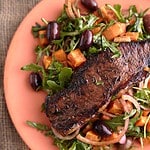



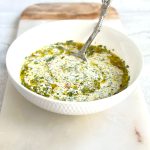
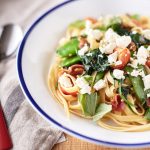



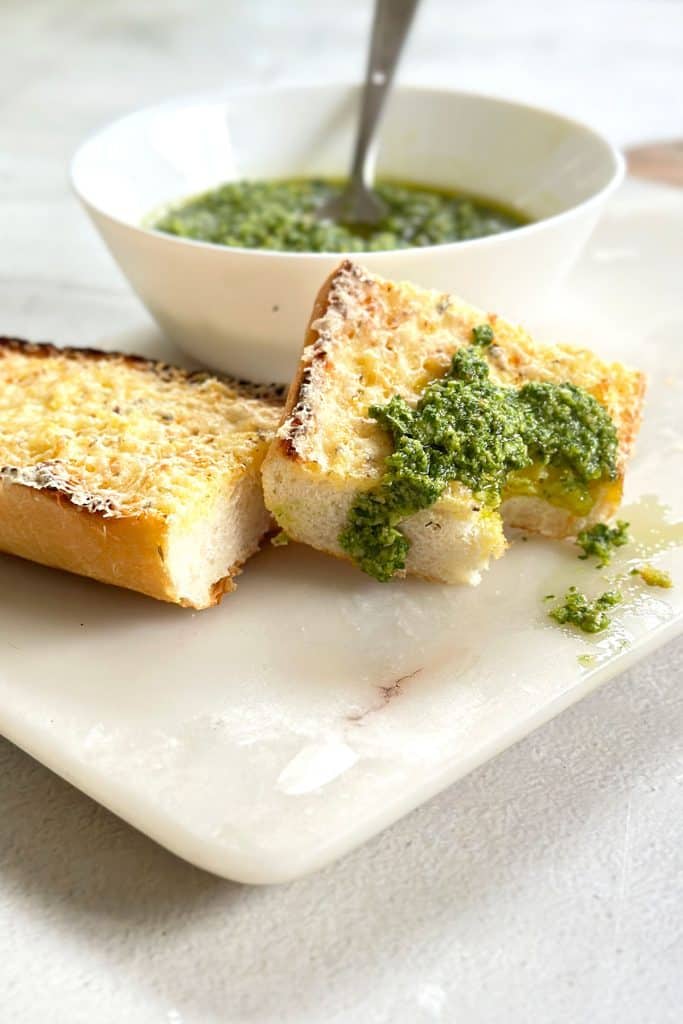
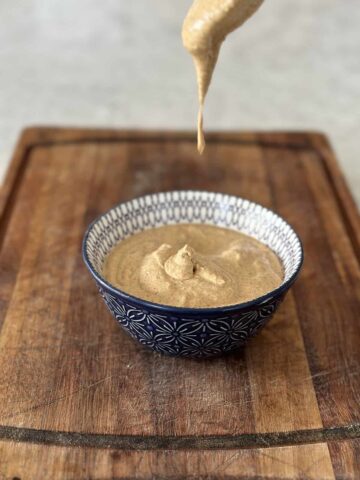
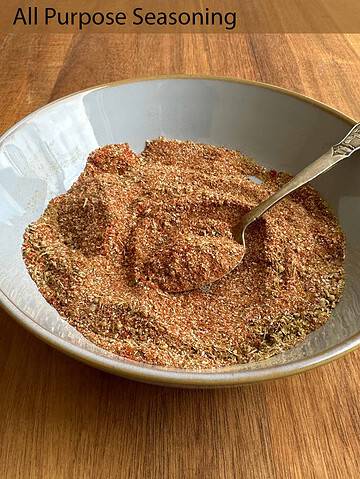
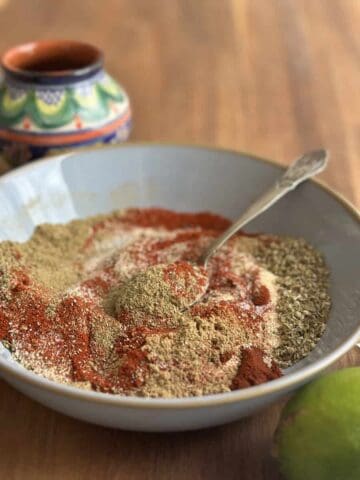
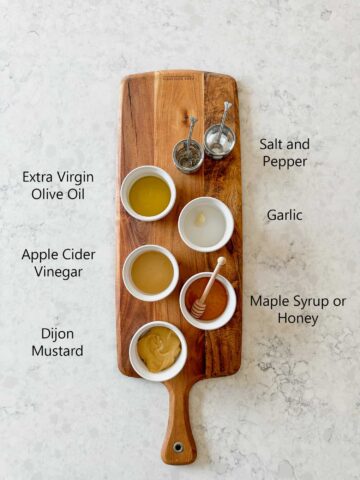
Theresa Christ says
I’m first generation Italian with roots in the hills of Genoa and I’ve been making this for almost seventy years and experienced not only in my home in San Francisco but in homes and restaurants in Genoa. I have never experienced home made basilico with pine nuts. When I taste it elsewhere it tastes strange. I also find it easier to coarsly chop both the garlic and basil. Absolutely no salt, pepper and lemon. Some home cooks in Genoa add an insanely amount of butter, I’ve tried it at home but much prefer basil, garlic Parmesan and olive oil and we lend it smooth. We also use 4 to 5 cloves of garlic, very lightly salt and drizzle with just barely enough olive oil to make your hot pasta glisten. We use fettuccine, linguine or lasagna loosely layer the lasagna on a platter alternating oil on the bottom, Parm and pesto. Lastly, don’t blend the ingredients until your pasta is cooking, the basil will blacken. If you like what you made you can make it in bulk, pour into a sterilized canning jar and top with a 1/4 inch of olive oil and store in the fridge. We harvested our basil just before the frost and stored it for the winter. It is also the base of all our minestrone. This is not to denigrate the original recipe but to add to mix. Everyone has their own. Manga, miei amici !
Margaretha @myconvenientkitchen says
Thank you so much for sharing these incredible tips! I recently holidayed in Italy, and I've been on a mission to bring those authentic flavours home. Hearing about your approach to basilico is so inspiring—I can just imagine the flavours of Genoa in your kitchen! I aim to simplify recipes for busy cooks while keeping the heart of those original flavours intact, so your advice is absolutely invaluable. Truly appreciate all the insights—grazie, and mangia!